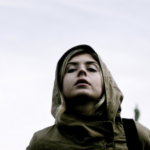Introduction
We have developed a profound appreciation for the mesmerizing allure of capturing stunning dark blue photos. In this article, we will delve into the intricate details and techniques that can help you master the art of capturing and enhancing the beauty of dark blue hues in your photographs. With our comprehensive guide, you will be equipped with the knowledge and skills necessary to create captivating images that will truly stand out. So, let’s embark on this visual journey together and unlock the secrets of capturing the essence of dark blue through the lens.



Understanding the Power of Dark Blue
Dark blue, a color associated with depth, tranquility, and mystery, holds a unique allure in the world of photography. It evokes a sense of calmness and serenity, offering a visual experience that is both captivating and profound. Whether it’s a vast ocean, a clear night sky, or an enchanting twilight scene, dark blue hues can add a touch of magic and elegance to your photographs.

Mastering Composition for Dark Blue Photos
- Utilizing the Rule of Thirds: When composing your dark blue photos, consider applying the rule of thirds to create a visually balanced image. Divide your frame into a 3×3 grid and position your main subject along the intersecting lines or at their intersections. This technique adds depth and interest to your composition, making it more visually appealing.
- Leading Lines: Incorporating leading lines into your composition can guide the viewer’s gaze and create a sense of depth within your dark blue photographs. Look for natural or man-made elements such as roads, bridges, or shorelines that can act as leading lines, drawing the viewer’s attention towards the focal point of your image.
- Foreground Interest: Including a compelling foreground element in your dark blue photos can enhance the overall composition and provide a sense of scale. Look for objects like rocks, plants, or structures that can add depth and visual interest to your image, while also creating a sense of context.



Capturing Dark Blue in Different Settings
- Seascapes and Water Bodies: One of the most enchanting ways to capture dark blue in all its glory is by photographing seascapes or other water bodies. The ever-changing nature of water, combined with the deep blue tones, creates a stunning backdrop for your photographs. Experiment with long exposures to capture the motion of the waves and achieve a dreamy effect.
- Night Sky and Astrophotography: Dark blue takes on a whole new dimension during nighttime photography. Venture into astrophotography to capture the captivating beauty of the night sky. Frame constellations, the moon, or even the Milky Way against a backdrop of deep blue to create awe-inspiring images that evoke a sense of wonder and amazement.
- Cityscapes at Twilight: As the sun dips below the horizon during twilight, the sky often transforms into a rich canvas of dark blue hues. Capture the enchantment of cityscapes during this magical time by experimenting with long exposures and capturing the interplay of city lights against the deep blue sky. This juxtaposition creates a striking contrast that can result in truly breathtaking images.
Enhancing Dark Blue in Post-processing
To truly bring out the essence of dark blue in your photographs, post-processing plays a vital role. Here are a few techniques you can employ to enhance the richness and depth of dark blue tones:
- Adjusting White Balance: Fine-tuning the white balance in your photographs can help you achieve the desired dark blue tones. Experiment with cooler color temperatures to intensify the richness of blue in your images, but be mindful of maintaining a natural and pleasing overall balance.
- Selective Adjustments: Utilize selective adjustments in post-processing software to target and enhance specific areas of dark blue within your images. Adjusting the saturation, vibrance, and contrast of these areas can help make the dark blue tones more vibrant and captivating.
- Graduated Filters and Layer Masks: Graduated filters and layer masks allow you to selectively darken or lighten specific areas of your image. By using these tools effectively, you can accentuate the dark blue hues, bring out subtle details, and create a more visually striking photograph.



Conclusion
Capturing stunning dark blue photos is an art form that requires an understanding of composition, a keen eye for detail, and the ability to harness the potential of post-processing techniques. By mastering the intricacies of working with dark blue, you can create visually captivating images that leave a lasting impression on viewers. So, grab your camera, venture into the world of dark blue, and let your creativity soar as you unlock the mesmerizing beauty that lies within this enigmatic color.
Creating a Cozy and Inviting Fall Aesthetic: A Comprehensive Guide
How to Use Orange Aesthetic in Your Design
10 Inspiring Yellow Aesthetic Ideas for a Bright and Cheery Look
The Meaning of Green in Aesthetics and Design

